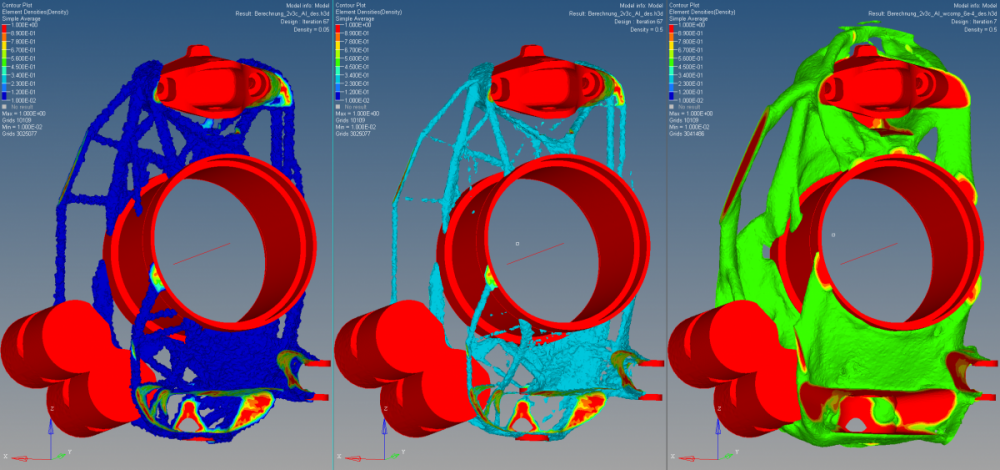Hi,
I'm doing a topology optimization with Optistruct 13.
It's about a wheel carrier for a formular student car with 8 static load cases.
I've set up 2 different optimizations:
1. with the objective of min volfrac
2. with given mass (from 1. optimization) and min wcomp
Both with same modell and element size 1.5, mindim 4, maxdim off, Stress constraint of 110 and a max displacement for 8 nodes.
[1] For the 1. optimization a get a good looking result, but i have to set the density very low (0.05-0.1, left picture). Even with this value the reanalysis gets higher stress than the constraining. With lower values (0.5) there are unconnected elements (middle picture).
[2] For the 2. optimization the solver isn't able to calculate a result with the given mass of opt. [1]. With higher values it's getting results. There I have good results with density of 0.5, but it's to heavy (right picture).
I try to understand the differnt methode behind this 2 optimizations. Specially how it's setting up the density.
So my questions are:
- What are the method behind this 2 optimizations? [2] behave like it's described in the SIMP Method but in [1] it seems like there is no penality (according to SIMP)
- What's the different in the algorythem of this both optimizations?
- Why I have to set down the density so much for [1]
I've read a lot in the HW help, journals and books, but I'm not able to explain it, so thanks a lot for every answer.
<?xml version="1.0" encoding="UTF-8"?>